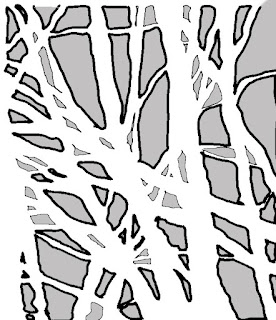It seems that I currently have a global footprint of 22.89 gha (global hectares). Unfortunately I do not have base line data for what my footprint was before the influence of permaculture on my life, but the breakdown by consumption category below indicates that in every category my impact is below the UK average. The average UK ecofootprint is 48.19 gha, requiring 3.07 Earths for everyone on the planet to lead the same lifestyle - it would be easy to feel good about how much lower than this I am, but no matter how good I felt about it, I'd still be using at least .46 Earths too much for a fair share.
The chart below indicates how my footprint is spread across different biomes.
My impact was rated worse by the WWF Environmental Footprint calculator, which suggested that if everyone on the planet lived my lifestyle, we would need 1.85
Earths. That's at least .85 Earths too much for a fair share. Their calculator also gives a lower UK average (3 Earths) further decreasing the difference between by impact and the national average.
The footprint calculator offered by Best Foot Forward asks far fewer questions that the Redefining progress of WWF ones, so is presumably less sophisticated. It offers me a worse result than either, suggesting that for the global population to live my lifestyle 1.9 planets would be required:
It features this odd dial which you can turn to indicate a % improvement in the 'efficiency of the economy'. I left it at zero, if you spin it up to an 80% efficiency gain, we'd still need 1.1 planets for everyone to live my lifestyle - at least .1 planets too many for a fair share. I suppose this indicates that efficiency gains are valuable, but do not preclude behaviour change.
This calculator appears quite problematic to me, it proclaims itself as going farther than a carbon calculator - but it's quiet blunt in its analysis. What does it mean by 'efficiency of economy'? The asterisked note informs us that it means 'the efficiency of delivering goods, services, infrastructure, health and education' - I'm not sure how much personal efficacy we can have in this area and I'm still left asking what does it mean by efficiency? Energy efficiency would seem the most obvious choice (how much energy used for a unit of output), but economists tend instead to mean Labour efficiency when they talk about the 'efficiency of economy' (how many workers employed for a unit of output). As we are considering biocapacity in global hectares then land efficiency would seem to be the appropriate measure (how much land necessary to produce a unit of output). As the strategies for improving efficiency in energy, labour and land use will tend to be different and to an extent exclusive - the improvement dial appears worthless to me.





































